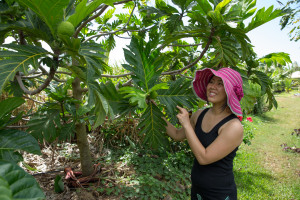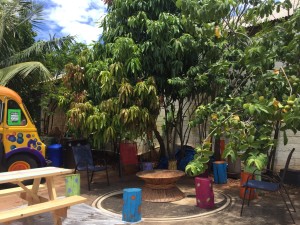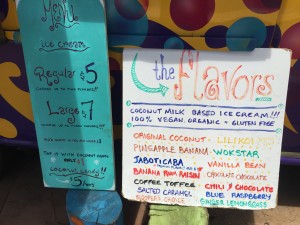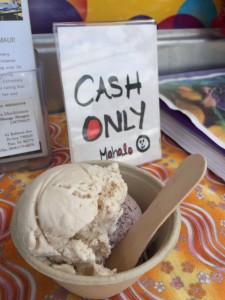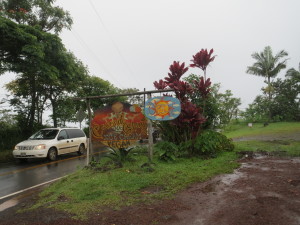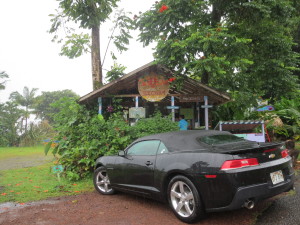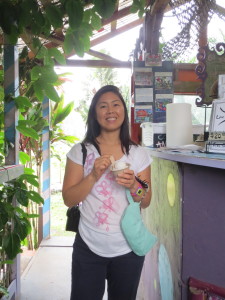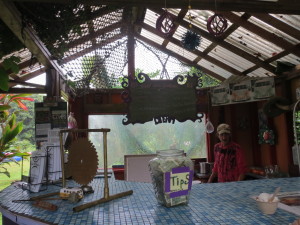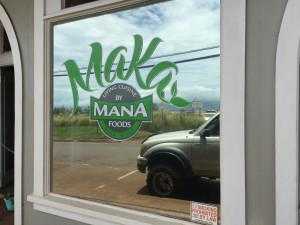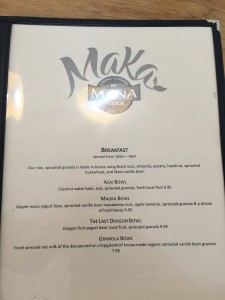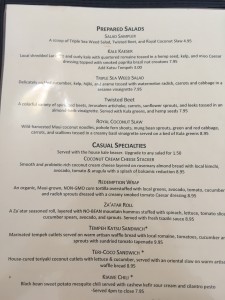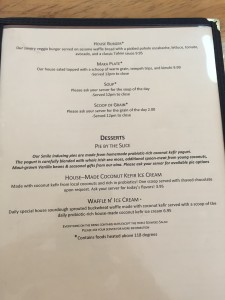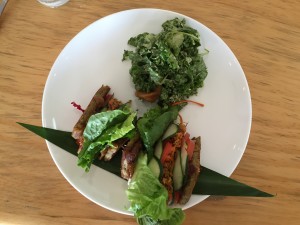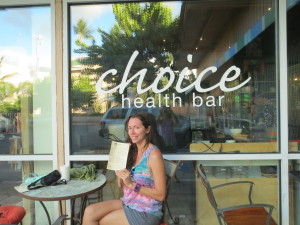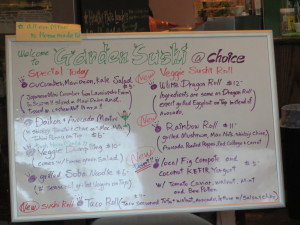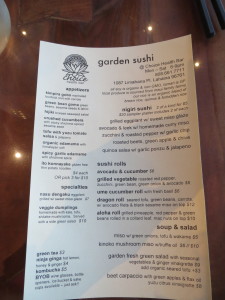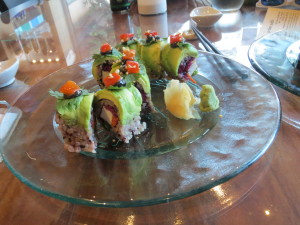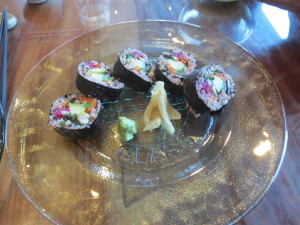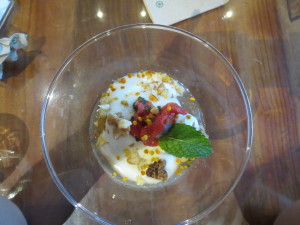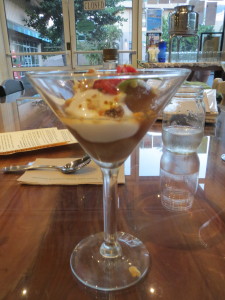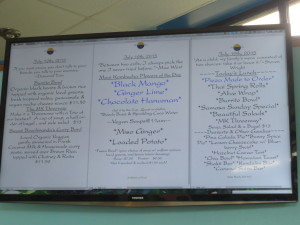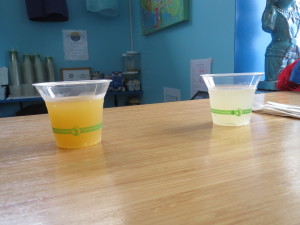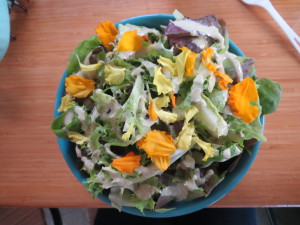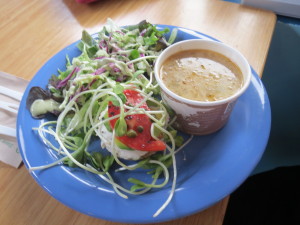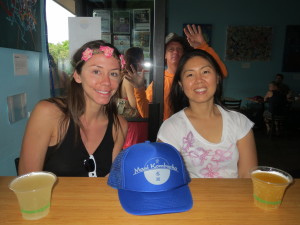There has been a lot of hype around this diet called “Paleo”, which is supposed to be modeled on the diet of our paleolithic ancestors. I have decided to dedicate this week’s blog to a discussion about the Paleo diet because there is a lot of misinformation out there, and I wanted to clear the air.
There are a few concepts behind their diet that I found on their website which recommends 19-35% protein intake, non-starch fresh fruit and vegetables for fiber but recommends against grains, a moderate to higher fat intake, and avoiding processed foods. Paleo is a diet high in meat, which contains a lot of protein and fat. I do agree that unprocessed foods should be avoided, but I disagree with their recommendations against grains and eating more fat and protein.
There are several problems with their theory. There is a great TED Talk: “Debunking the Paleo Diet”, that I am going to summarize here.[1] According to Christina Warinner, an archaeological geneticist, in her TEDouX talk, she states “Humans have no known anatomical, physiological, or genetic adaptations to meat consumption. Quite the opposite, we have many adaptations to plant consumption.”
She states, “Myth two is that Palaeolithic peoples did not eat whole grains or legumes…we have stone tool evidence from at least 30,000 years ago – that’s 20,000 years before the invention of agriculture – of people using stone tools that look like mortars and pestles to grind up seeds and grain…we can say that there is an abundance of plant remains inside the dental calculus of Paleolithic peoples. And these things include grains, including barley. We’re finding barley inside Neanderthal teeth, or inside the plaque. We also have legumes and tubers.”
She explains that Paleo Diet foods are all domesticated foods, products of farming and agriculture, from the Neolithic transition, not what our ancestors ate! Also, there was not one diet for all Paleolithic people. Diets from different regions of the world varied, depending on what they had available to them.
Paleo diet proponents state that their diet reverses diabetes and is effective for cardiovascular disease. From a recent article in the Scientific American: “The Paleo diet not only misunderstands how our own species, the organisms inside our bodies and the animals and plants we eat have evolved over the last 10,000 years, it also ignores much of the evidence about our ancestors’ health during their—often brief—individual life spans (even if a minority of our Paleo ancestors made it into their 40s or beyond, many children likely died before age 15)…either Paleo hunter–gatherers nor our more recent predecessors were sculpted Adonises immune to all disease. A recent study in The Lancet looked for signs of atherosclerosis—arteries clogged with cholesterol and fats—in more than one hundred ancient mummies from societies of farmers, foragers and hunter–gatherers around the world…they found evidence of probable or definite atherosclerosis in 47 of 137 mummies from each of the different geographical regions.”[2]
Eating a diet with more meat and therefore more fat, will clog arteries and make people more susceptible to heart disease and diabetes. There is a great short video on nutrition facts.org outlining the process: “Diabetes as a disease of fat toxicity”.[3]
A lot of my patients believe that eating too many grains has caused them to become overweight. I am going to include an question and answer session with my brother (who prefers to remain anonymous) and how he lost weight on a white rice diet over twenty years ago and has managed to keep it off! I do not recommend people try this diet, but I wanted to include this interview to show people that “eating too much rice” is not causing their obesity! Usually the problem is eating too many animal products and processed foods.
What motivated you to lose the weight?
I wanted to have a more active lifestyle and get in shape. There were different sports and recreation that I could enjoy more if I were in better shape. I was also tired of being judged by people for my weight.
What kinds of things were you eating everyday before the diet?
I drank a ton of soda, with most meals and in between meals. I also ate a lot of pizza, cookies, chips, and fast food.
How much did you weigh at the time you started your diet and how much weight did you lose?
190 lbs, 45 lbs lost over 2 months
How did you come upon the rice diet?
I knew which foods tended to make me gain weight. I removed these foods and what remained was rice, vegetables, cereal, and MINIMAL QUANTITIES of meat.
Explain the rice diet. Did you just eat rice or also vegetables? What did you drink?
I had three meals a day, with no snacking in between. Also, I had no food after dinner. For breakfast, I had a bowl of raisin bran, rice crispies, or Special K with1 cup of fat free milk. I would have rice, vegetables, and SMALL AMOUNTS of dried meat for most breakfast and dinner meals. I actually WAS NOT TOO STRICT ABOUT RICE PORTIONS, HAVING 3 TO 4 CUPS PER MEAL. Occasionally, I would substitute plain noodles seasoned with soy sauce and sesame oil instead of rice. I drank exclusively water other than the skim milk for breakfast. I also ran a mile a day and did other active things like yard work.
How did you keep the weight off all these years?
I still drink water almost exclusively and avoid consuming empty calories from beverages including soda and coffee. I still avoid snacking during the day or after dinner. Minimizing intake of pizza, fast food, and junk food has helped.
In conclusion, my brother was able to lose weight by minimizing his meat and processed food intake and eating primarily rice and vegetables. Rice or grains do not cause obesity, which is evidenced by the fact that people eat a lot of rice in Asian countries, but they are less overweight than Americans. Unfortunately, people in Asian countries are now becoming more overweight and are suffering from more chronic disease, since we have been exporting our “fast food” to their countries. This is because animal products contain much more fat! Also, the processed food we eat is often lacking nutritional value so that our bodies does not feel satiated, and we continue to eat more until we are obese.
As I stated earlier, I am not recommending this diet. I just wanted to illustrate my point that grains do not cause obesity. 365 Days of Graceful does not provide medical advice and you should always consult a licensed physician prior to making any changes to your diet or engaging in an exercise regime.
Addendum added 9/13/15: A new study by the University of South Carolina confirms people who want to lose weight will most effectively lose weight with a vegan diet. The study, published in The International Journal of Applied and Basic Nutritional Sciences, followed participants who were randomly assigned to one of five diets on the dietary spectrum: vegan, vegetarian including dairy and eggs, semi-vegetarian with occasional meat intake; pesco-vegetarian which includes fish, and omnivorous. At the end of six months, those on the vegan diet lost more weight than the groups by an average of 4.3%, or 16.5 pounds. (4) So if you need or want to lose weight, the most effective way to do it is with a plant-based diet!
(1) Christine Warinner, “Debunking the Paleo Diet,” TEDouX video, Feb 12, 2013, http://tedxtalks.ted.com/video/Debunking-the-Paleo-Diet-Christ.
(2) Ferris Jabr, “How to Really Eat Like a Hunter-Gatherer: Why the Paleo Diet Is Half-Baked [Interactive & Infographic],” Scientific American, June 3, 2013, Web, August 14 2015.
(3) Michael Greger MD, “Diabetes as a Disease of Fat Toxicity” Nutrition Facts, Volume 24 · April 8th 2015, http://nutritionfacts.org/video/diabetes-as-a-disease-of-fat-toxicity/.
(4) Turner-McGrievy GM, Davidson CR, Wingard EE, Wilcox S. Frongillo EA. “Comparative effectiveness of plant-based diets for weight loss: a randomized controlled trial of five different diets.” Nutrition, 31 (2) 350-358.

